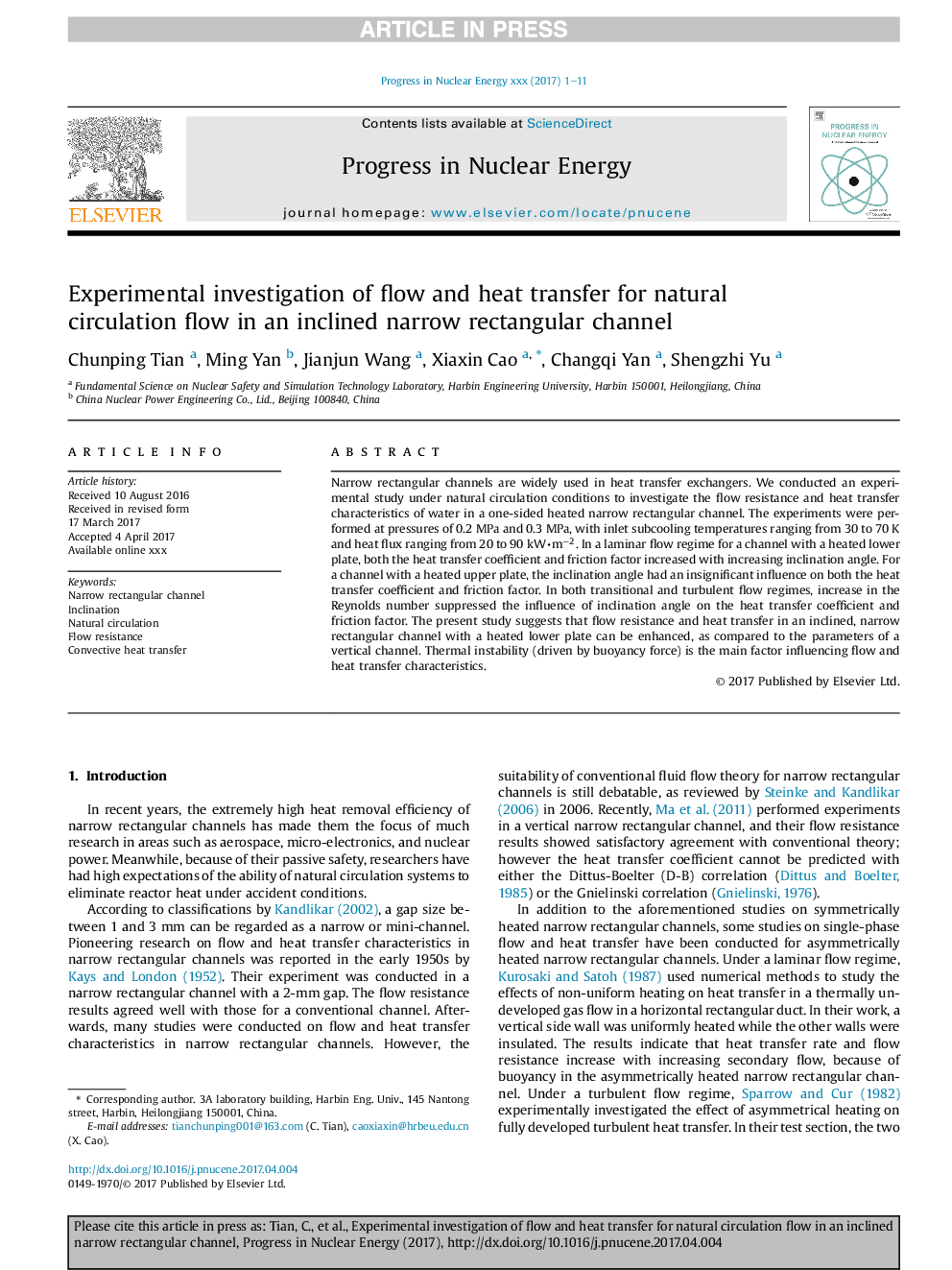| Article ID | Journal | Published Year | Pages | File Type |
|---|---|---|---|---|
| 5478066 | Progress in Nuclear Energy | 2017 | 11 Pages |
Abstract
Narrow rectangular channels are widely used in heat transfer exchangers. We conducted an experimental study under natural circulation conditions to investigate the flow resistance and heat transfer characteristics of water in a one-sided heated narrow rectangular channel. The experiments were performed at pressures of 0.2Â MPa and 0.3Â MPa, with inlet subcooling temperatures ranging from 30 to 70Â K and heat flux ranging from 20 to 90 kWâ
m-2. In a laminar flow regime for a channel with a heated lower plate, both the heat transfer coefficient and friction factor increased with increasing inclination angle. For a channel with a heated upper plate, the inclination angle had an insignificant influence on both the heat transfer coefficient and friction factor. In both transitional and turbulent flow regimes, increase in the Reynolds number suppressed the influence of inclination angle on the heat transfer coefficient and friction factor. The present study suggests that flow resistance and heat transfer in an inclined, narrow rectangular channel with a heated lower plate can be enhanced, as compared to the parameters of a vertical channel. Thermal instability (driven by buoyancy force) is the main factor influencing flow and heat transfer characteristics.
Keywords
Related Topics
Physical Sciences and Engineering
Energy
Energy Engineering and Power Technology
Authors
Chunping Tian, Ming Yan, Jianjun Wang, Xiaxin Cao, Changqi Yan, Shengzhi Yu,
